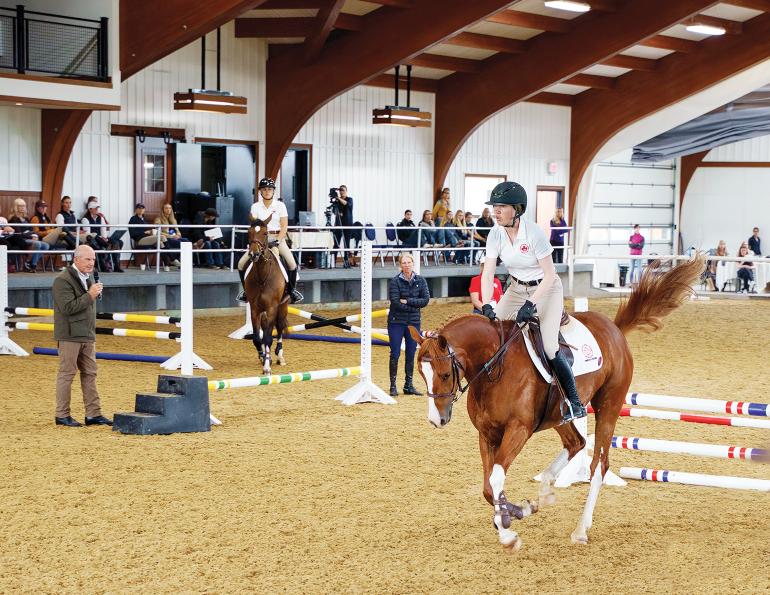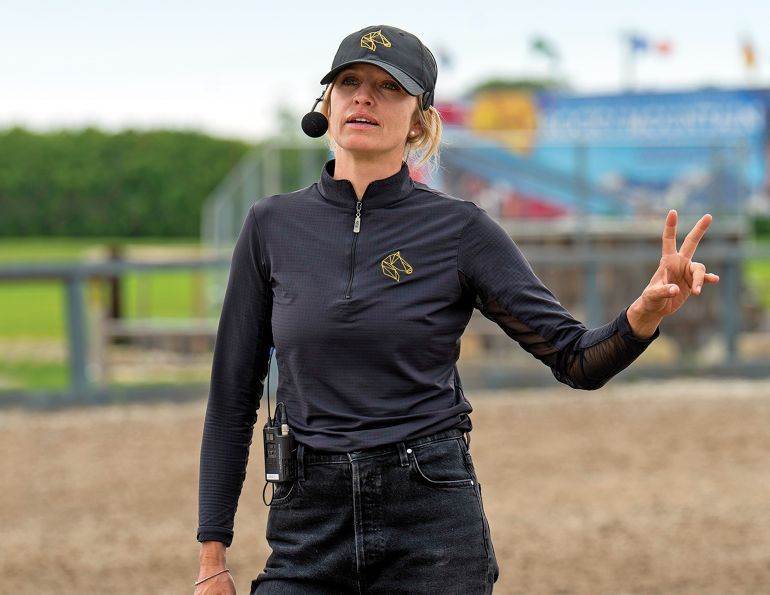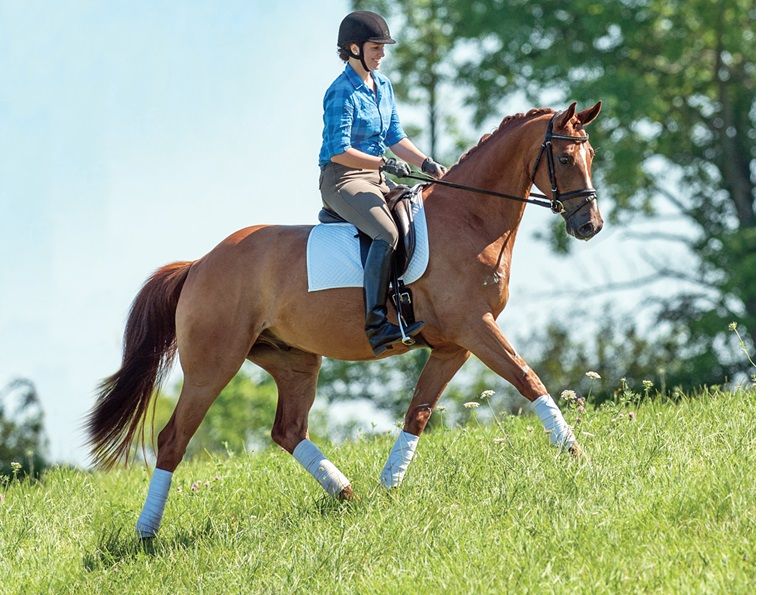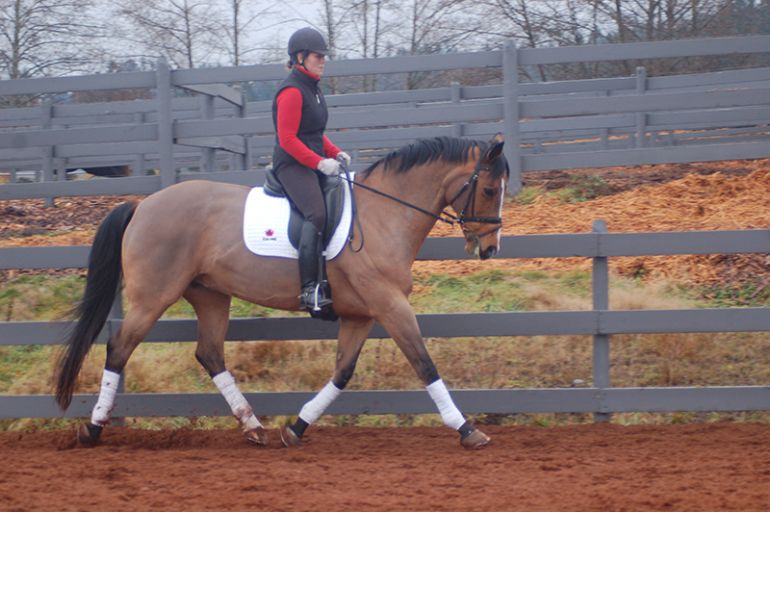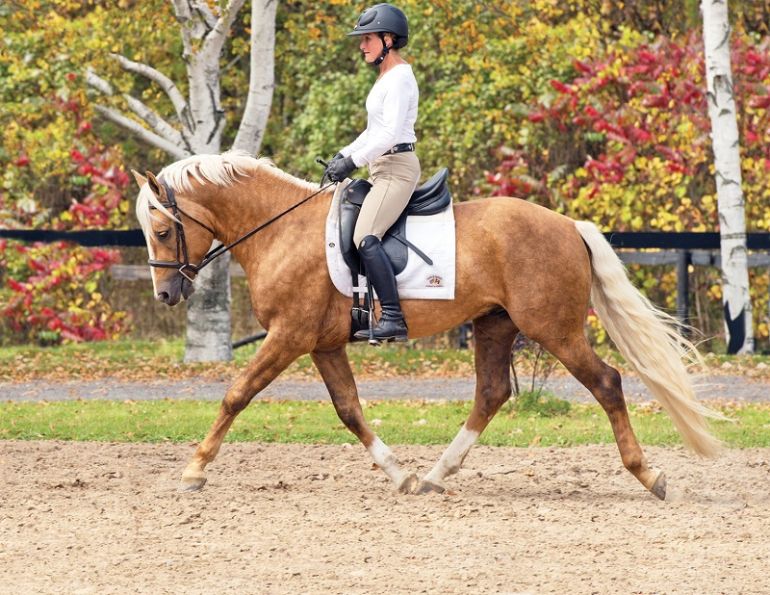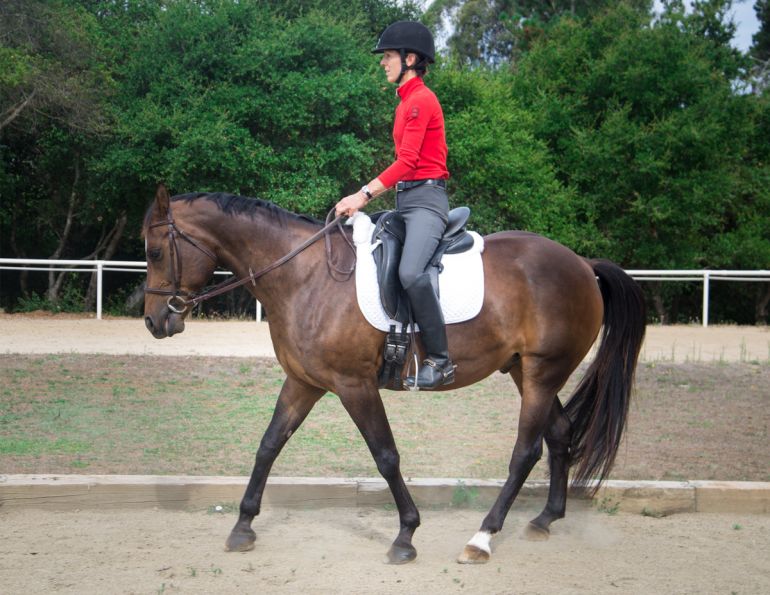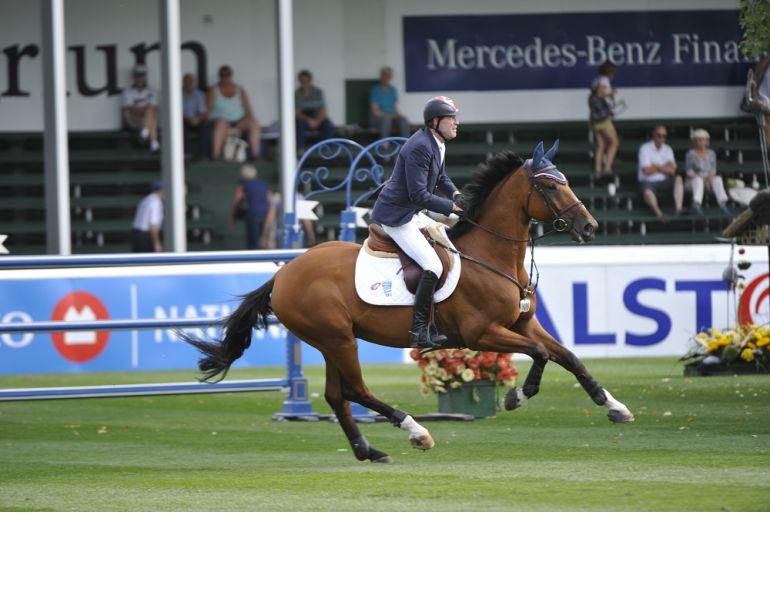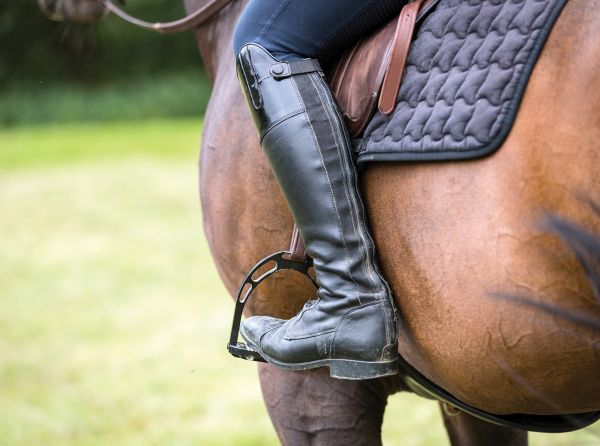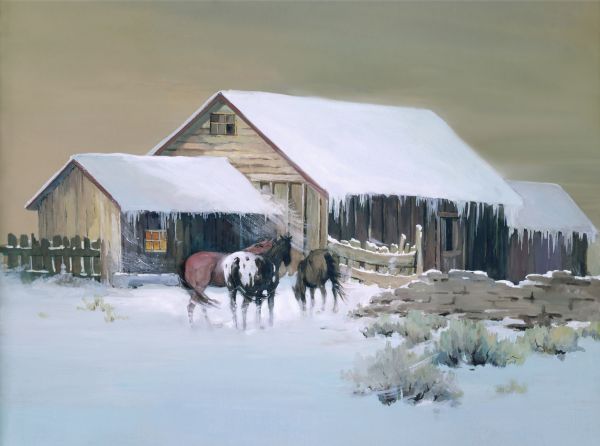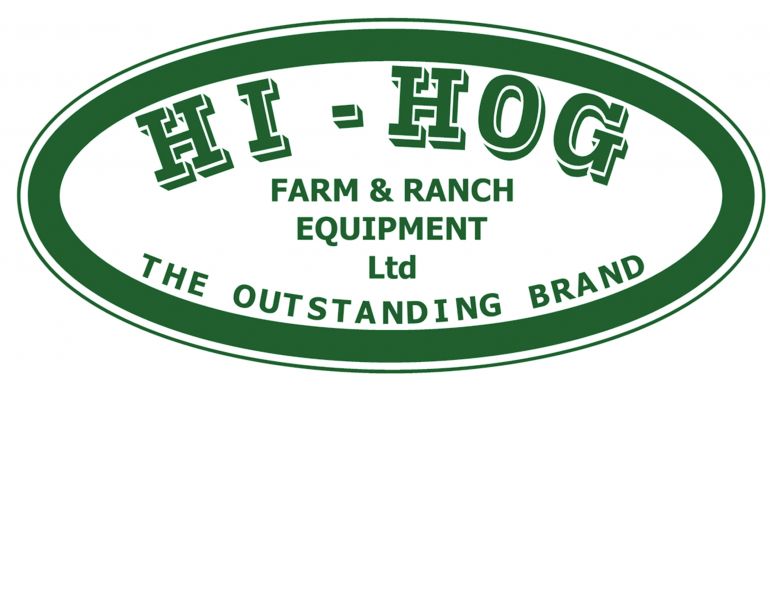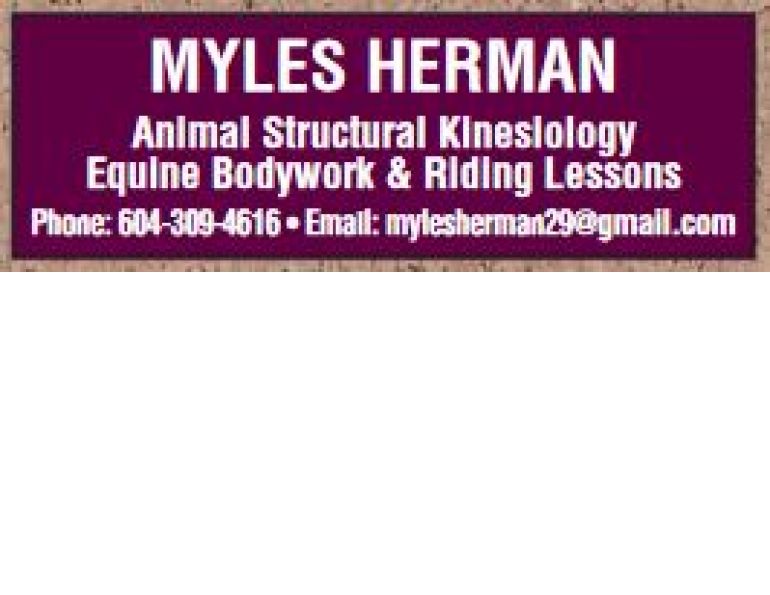There are no shortcuts
By Tania Millen, BSc, MJ
“Riding is like digging a swimming pool with a spoon,” says John Madden. “It’s really hard work and takes a long time.”
On July 6, 2022, the Canadian Sport Horse Association (CSHA) hosted The Madden Method Symposium at Eventyre Farms, southwest of Calgary, Alberta. “This was a one-off event,” says Marie MacAuley, the symposium chair. “It will never happen again.”
Ten riders were split into three groups so that John and Beezie Madden could demonstrate the flatwork they expect from young horses, how they start youngsters over fences, and how to get them ready for coursework. The horses ranged from a green broke four-year-old to an eight-year-old jumping 1.2 metres and all were CSHA registered. Almost 180 auditors attended the symposium.
“A one-day clinic is just about trying to present our philosophy,” says Beezie. “It’s giving people ideas and tools.”
Beezie is well known in the show jumping world. She’s led the way in earnings, world rankings, international wins, and Olympic medals for female riders over the past 30 years. Meanwhile, her husband John’s sales and training business continues to produce winners. They don’t teach clinics as they’re busy bringing along their own horses and teaching select riders at home in Cazenovia, New York. However, they were happy to teach the symposium.
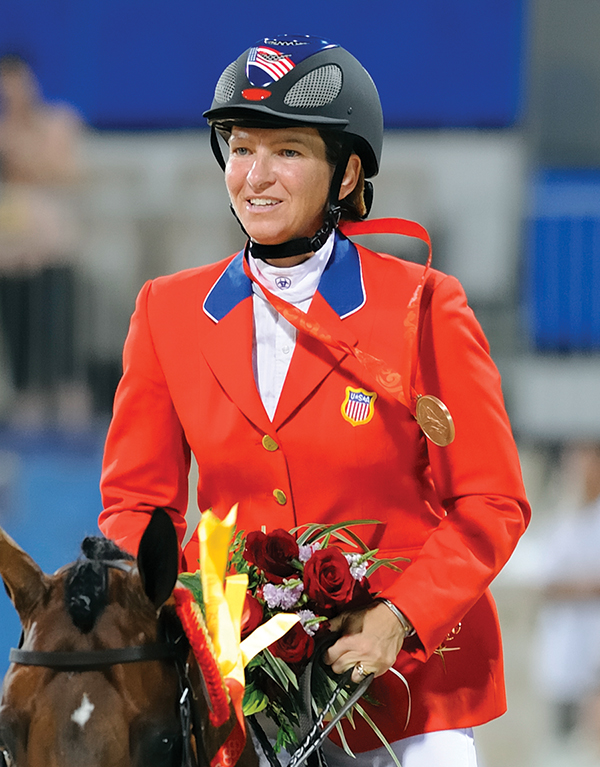
Beezie Madden, riding Authentic, was the Individual Bronze medal winner and a member of the gold-medal winning US Show Jumping team at the Beijing 2008 Olympic Games. Photo: Clix Photography
“Anything to promote breeding young horses,” says Beezie. “Breeding is more of a passion than a business and we need more people to do it. Every year the number of [Fédération Équestre Internationale(FEI)] riders increases. There’s just more people, more horse shows, and less breeding. So it’s really hard to find good horses. We need more supply.”
The symposium facility, photography, food for volunteers, and other services were donated. Southern Alberta pony clubbers were involved, too, setting up chairs and tables, directing attendees, and setting fences under Beezie’s tutelage.
“It’s important for kids coming up in the sport to see higher level riders and understand what it takes to bring horses to top level sport,” says Tina Watkins, De Winton Pony Club’s District Commissioner who organized the pony clubbers.
Life Changes
The symposium came at a good time for the Maddens. “I’m looking to slow down,” says Beezie. “I’m not really trying to make championship teams any more or stay high on the [FEI rankings] list. We’ve done it for quite a while, and I’ve lost the passion for that.”
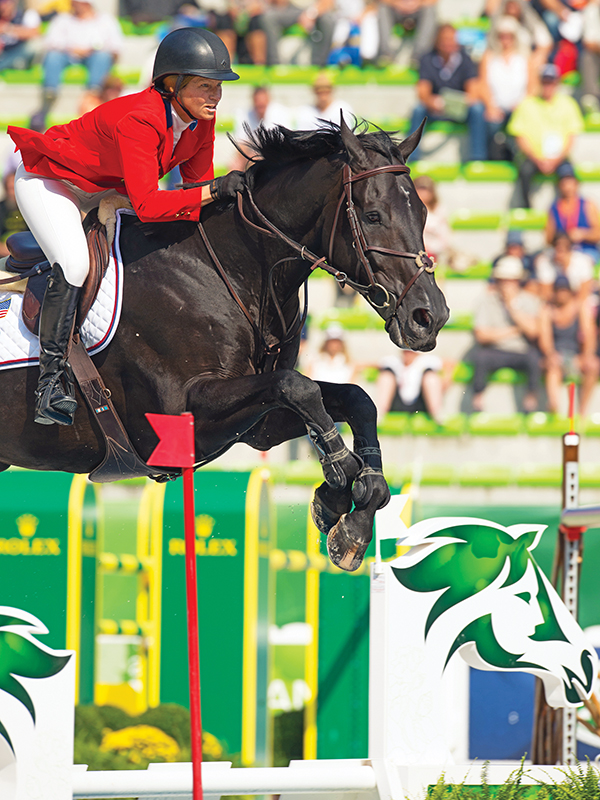
Riding Cortes C, Beezie Madden claimed the Individual Bronze medal at the 2014 Alltech FEI World Equestrian Games. Photo: Clix Photography
But she still has Breitling LS, a stallion she’s been competing since 2013 and who won the 2018 Longines World Cup Final. “When he feels like it and the timing is good, I do big classes with him,” she says.
Beezie also has a tumour which — although not life threatening — occasionally affects her balance. “Some days I’m 100 percent and other days I’m a little foggy,” Beezie says. “So I don’t want to say I can ride on a team and produce for the team when I may not be 100 percent. It’s just a little factor.”
Related: How to Walk a Jump Course
Madden Basics
“People do things differently,” Beezie says. “We’re just saying, ‘This is what works for us’ and it evolved into somebody calling it the Madden Method.”
“I think what’s special about [our program] is it’s not special,” says Beezie. “It’s day-to-day good care of the horses. Putting what’s right for the horses first.”
But they’re particular about everything, from horsemanship and stable management to schooling young horses and how to get show jumpers to the top of the sport.
As for training, “It’s just basics, basics, basics, flatwork, gymnastics, jumping,” she says. “There are no shortcuts.”
Beezie Demonstrates
Prior to the first group of riders, Beezie rode Mo Money, a stallion owned by Eventyre Farm, while John provided commentary. As Beezie walked, trotted, cantered, did transitions, leg yield and popped over a few fences, John discussed safety, the importance of position, and the foundations of their method.
“When working with young horses you always have to have more time than they do,” he says. “You can’t have an agenda.”
Throughout the symposium, John emphasized the importance of going forward with light contact, in rhythm.
“A horse is a flight animal so the first thing you want to do is to make sure the horse is happy to go forward,” he says. “You have to let them rely on their instincts and give them a place to go.”
“Forward, straight, relaxed and reaching for the bit.”
“Imagine a box around the horse. As long as they stay in the box, it’s okay. One of your goals is to be able to make that imaginary box smaller and smaller while the horse doesn’t hit the edges of the box.”
He explained how to use pressure and release, and how lessons build on each other.
“Ask often, demand a little, and be happy with your result. Every time he starts to react in a way she wants, she takes the leg or hand pressure away.”
“You can take a very complicated thing and boil it down into really simple parts. Layer the lessons. Be very happy with a little bit of reaction. Tomorrow he’ll do it better and the day after he’ll do it even better.”
“We try to not have to retrain things. The basics stay the same. When you ask them to go forward, they go forward. When you ask to go sideways, they do that. It’s your job to ask little enough so it doesn’t turn into a fight. When you make incremental steps forward, you go a long way.”
When Beezie started jumping small fences, she stayed in balance and grabbed mane if needed. “There’s no place for contact in training a young horse to jump.”
Following Beezie’s demonstration, the first group of riders came in.
Related: Adjust Your Horse's Stride with Gymnastics Jumping Exercises
Flatwork for Young Horses
“Our first group is going to be really basic flat, maybe some rails on the ground, to introduce flatwork within jumping,” says Beezie. “They’re the least experienced horses. They’ve started to jump but don’t have a lot of showing experience.”
While the riders rode walk, trot, and canter with minimal contact, they worked on their position. John commented, “Your leg position is the foundation of everything. Don’t worry about the mouth. You owe it to your horse to get your position before you take his mouth otherwise you just make him stronger and stronger.”
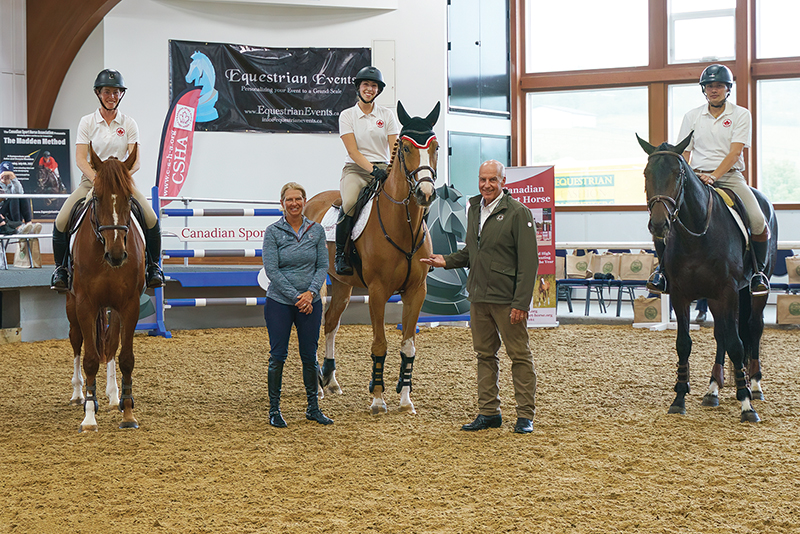
The first group of riders demonstrated the flatwork that the Maddens do with young horses and jumpers. L-R: Maddy Riddle riding four-year-old Scarlet Pipernel, a mare by Diamant de Semilly; Beezie Madden; Emma Edwardson riding her five-tear-old homebred gelding Check My Ride by Checkmate; John Madden; and Gavin Pearson riding the four-year-old stallion TMAC Everclear by Herald III. Photo: KimBerlie Photography
More of John’s comments are as follows:
“They need to learn to go on very little contact. You’re not worried about connection or flexion. Just maintain the rhythm and contact with your calf.”
“People tend to do too much with their hands. Horses have to go forward, first. If they don’t understand forward, you are always going to be fixing symptoms. I don’t want to be retraining so I want the horse to get the correct fundamentals from the beginning.”
At the end of the session, I chatted with Emma Edwardson who rode her five-year-old gelding Check My Ride in the first group. “I like to keep him together and then let him [go forward],” she says. “And their philosophy was the opposite. It was to let him [go forward] and then bring him together. So that’ll be interesting to try at home.”
Then it was time for the second group demonstration.
Basic Gymnastics
“The second group is going to be basic gymnastics for young horses,” Beezie explained. “We’ve set up gymnastic exercises and we’re going to jump on a serpentine so they learn about jumping and turning as well.”
“The key to young horses is to keep it simple,” she says. “Emphasize the flatwork rather than the jumping. Start with confidence. Set a comfortable distance to try to get their shape correct.”
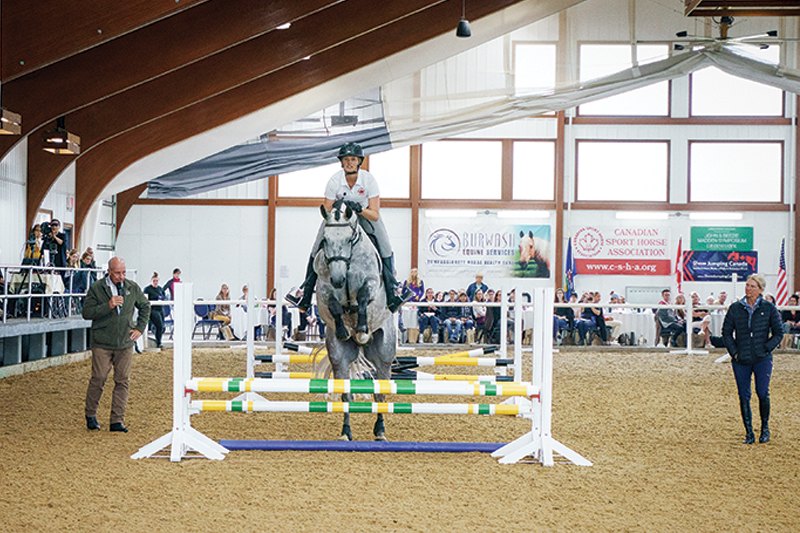
Beke Brinkmann rode her six-year-old homebred gelding Chinook I in the second group of riders, which demonstrated the Maddens’ fundamental exercises for jumpers. Photo: KimBerlie Photography
After an abbreviated warm-up, John asked the riders to walk over three poles spaced 45 feet (13.6 m) apart with minimal contact. Then they trotted both ways, maintaining rhythm. Then they trotted the first and last pole and walked the middle pole, working on transitions.
He says, “The control after each fence is the approach to the next fence.”
Then the riders rode the three poles in canter. “Maintain rhythm and don’t worry about striding,” John says.
They trotted a crossrail and halted afterwards with no contact. Eventually they were riding a grid of three fences with one stride in between, approached at trot with a halt afterwards.
John’s comments were as follows:
“First things first. The horse has to jump.”
“Your balance has to be exactly with the horse. When the jumps come up — even if they’re small — the little things show up. None of us can practice perfectly but we can try to. We have an obligation to our horses to ride better every day.”
After the session I spoke with Carly Kist who rode Cara Bella, an eight-year-old mare by Cabardino in the second group. She says she learned, “when I can push and be firm and when I need to give a reward so that it’s really simple in her mind.”
The third and last group was next.
Related: 9 Best Cavalletti Exercises
Starting Coursework
“The third group is the most advanced group of the day,” Beezie says. “It’ll be preparation for young horses to get ready for a show. So we’ll switch the jumps around and make it a simple little course.”
After a brief warm-up the riders individually cantered a crossrail on a circle, maintaining rhythm then slowing after the fence.
“Lateral flexion is a fundamental basic and it’s easier than bringing their back up,” says John. “So in the warm-up we like to jump the horses off a turn or a circle. It helps loosen their backs.”
Then the riders jumped related distances in canter, halting after each line. Finally, they rode a course by stringing together all the lines they’d already ridden.
“You can do a course by dissecting it — doing single exercises then putting it together piecemeal,” says John. “We don’t do many courses to get ready to do courses. You can get ready for the Olympic Games with only four standards and four rails.”
Final Thoughts
Throughout the symposium, John and Beezie freely shared their knowledge and philosophy. Here are some essentials:
“The horses have to do simple, basic things,” says John. “Lengthen, shorten, turn right, turn left, stay calm and in balance. A lot of the rest is up to their God-given talent. There’s an awful lot not in our control so we better work very hard on what we can control — training, rideability, and confidence.”
“With young horses, you have to trust that they’re good horses,” Beezie says. “Young horses grow up; they change. You have to keep adjusting with your horse.”
“You don’t cut a dog’s tail off an inch at a time. When you have [a major correction] to do, you do it once. Get the horse to react so you don’t have to nag them.”
“Horse have to be rewarded for getting better.”
“Try not to take steps backwards. If we get a little better every day, we’re going to get somewhere.”
“The biggest secret is that there is no secret. There’s no trick. It’s not easy. It’s very, very difficult. It’s simple. But you’ll spend a lifetime trying to accomplish these things.”
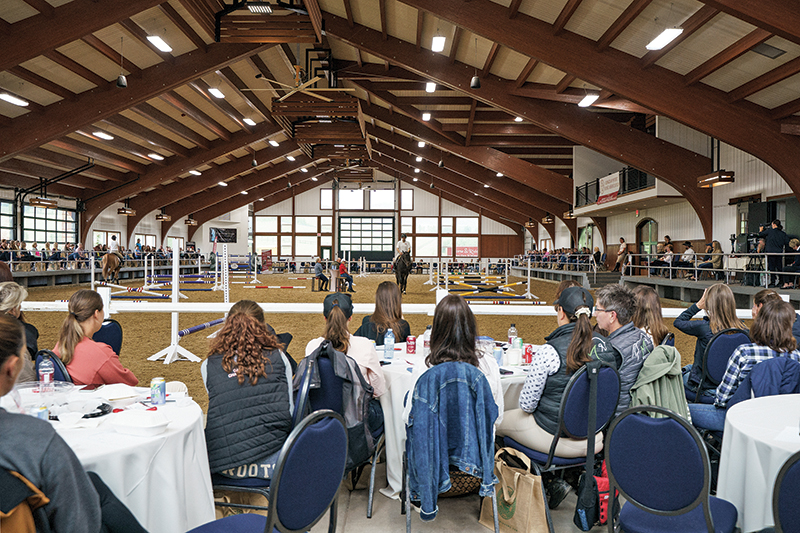
The symposium was held at Eventyre Farm and almost 180 auditors attended. Photo: KimBerlie Photography
The Madden Method Symposium — Online Viewing
A video of the symposium is available for online viewing at www.equestrianevents.ca. Any profits will be donated to the Alberta Equestrian Federation (AEF) and matched through the Alberta government’s Sport, Physical Activity and Recreation Donation Fund Program. The funds will help develop athletes, coaches, officials, volunteers, facilities and support the AEF’s new equine emergency fund.
Related: How to Enjoy Fall and Winter with Your Horse - 10 Ways
Main Photo: Carly Kist rode Cara Bella, an eight-year-old mare by Cabardino—in the second group of riders. The Maddens helped her give Cara Bella confidence while encouraging her to relax and not over-jump the fences. Claire Doty and her mare Ballerina are waiting for their turn. Credit: KimBerlie Photography



